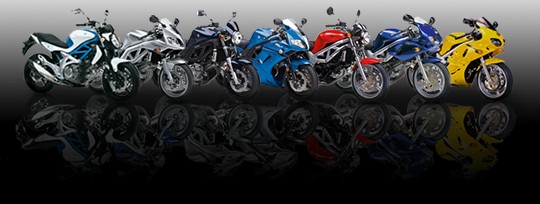 |
 |
| Bikes - Talk & Issues Newsworthy and topical general biking and bike related issues. No crapola! Need Help: Try Searching before posting |
 |
|
|
Thread Tools |
|
|
#21 |
|
Guest
Posts: n/a
|
No there's no synchro. Car boxes are synchro mesh, as I understand it.
. |

|
|
|
#22 |
|
Member
Mega Poster
Join Date: Jul 2003
Location: In the shadows to the left
Posts: 7,700
|
A bike box is a proper, seqential straight cut box with no syncros afaik.
|
|
|

|
|
|
#23 | |
|
Guest
Posts: n/a
|
Quote:
Doh! |
|

|
|
|
#24 | |
|
Member
Mega Poster
Join Date: Jul 2003
Location: Warwickshire
Posts: 2,804
|
Quote:
You get small contact patches with spiral bevel or hypoid type gears, but it's not quite the same with spur and helical gears. They both have line contacts. Helical gears are not fundamentally different to a spur gear ("straight cut" or in other words a helical gear with zero helix angle) in this respect. The contact pressure between teeth varies over the contact path, but you still design the total contact length to give contact stress which the materials and the oil film will withstand. As you say, extreme pressure oils can operate at higher contact pressures. Oils behave in an interesting way such tht at very high contact pressure the viscosity increases and they become almost semi-solid, but the films are then very thin (often a few molecules). The principle reason for using spur rather than helical for bike boxes is space. In order to have small diameter gears, the teeth need to be stronger for a given torque, and stronger means bigger "module" (= pitch circle divided by number of teeth), i.e. the teeth are big and stout rather than small and slender. This also applies to keeping the gears thin (i.e. axial length), and the gearbox short. Helical gears are primarily designed for refinement (noise/vibration), and the basic principle is that as one tooth pair comes into contact at one end of the helix, another is just leaving contact at the other end, so the total contact length stays pretty much constant and the stiffness of the contact doesn't vary much. Because the contact starts just at one end, the effective stiffness of the new contact is relatively low, and then the contact length along the tooth grows so the stiffness changes gradually, so the noise is reduced. Spur gears have the contact starting and stopping along the whole length of the tooth at one instant, which promotes noise. As one pair come into contact, the mesh stiffness sees a step increase, and a step decrease when they lose contact. There are subtleties in the manufactured tooth form which can allieviate these issues, addendum modification etc. To get the helix to work in your favour you usually try to get pretty close to (or a little over) one complete tooth pitch along the helix, and so the bigger the teeth (module) the longer the gear needs to be to get one pitch without having to have a very steep helix angle. The helix angle imparts axial force from the contact along the gear shaft, so you need thrust bearings, and also tries to bend the gear and shaft sideways. High helix angles are not desirable. In really big gears (marine propulsion etc) you see paired gears of opposite helix ("herringbone") which cancel out what would otherwise be huge axial forces. Sorry for the nerdy stuff, I do get out sometimes..........honest |
|
|
|

|
|
|
#25 |
|
Guest
Posts: n/a
|
[quote="jonboy"]One of the big factors regarding oil and engine wear is the frequency of change. Even a cheap oil changed at 3k miles is likely to give you better wear protection than an expensive oil changed at 6k. Ideally (and if your pocket supports it) then an expensive oil changed very regularly would perhaps be slightly better, but only slightly I suggest.
I've seen other reports on the web that have shown that Mobil 1 car oil did in fact maintain its viscosity better (over a period of time) than some leading bike oils. Car oil is ok for cars with there dry clutch systems ,but on bikes with a wet clutch, then bike oils have adatives to stop plate sticking and clutch slip. |

|
|
|
#26 | |
|
Guest
Posts: n/a
|
Quote:
. |
|

|
|
|
#27 | ||
|
Guest
Posts: n/a
|
Quote:
Kind regards Tim |
||

|
 |
|
|
 Similar Threads
Similar Threads
|
||||
| Thread | Thread Starter | Forum | Replies | Last Post |
| Engine Breaking? Hopefully not. Engine braking - is that OK? | butterick99 | SV Talk, Tuning & Tweaking | 14 | 12-09-09 10:31 PM |
| Ever worry about having too little oil in your engine? No, I check it every now and again. | SoulKiss | Bikes - Talk & Issues | 12 | 22-07-08 09:19 AM |
| Engine braking... any hazzards engine wise? | John 675 | SV Talk, Tuning & Tweaking | 21 | 28-03-08 07:20 PM |
| check out my tat | yellowsvracer | Idle Banter | 19 | 31-03-07 05:14 PM |
| Oil or Check engine light is on | wilsonma08 | SV Talk, Tuning & Tweaking | 0 | 16-08-05 06:00 AM |